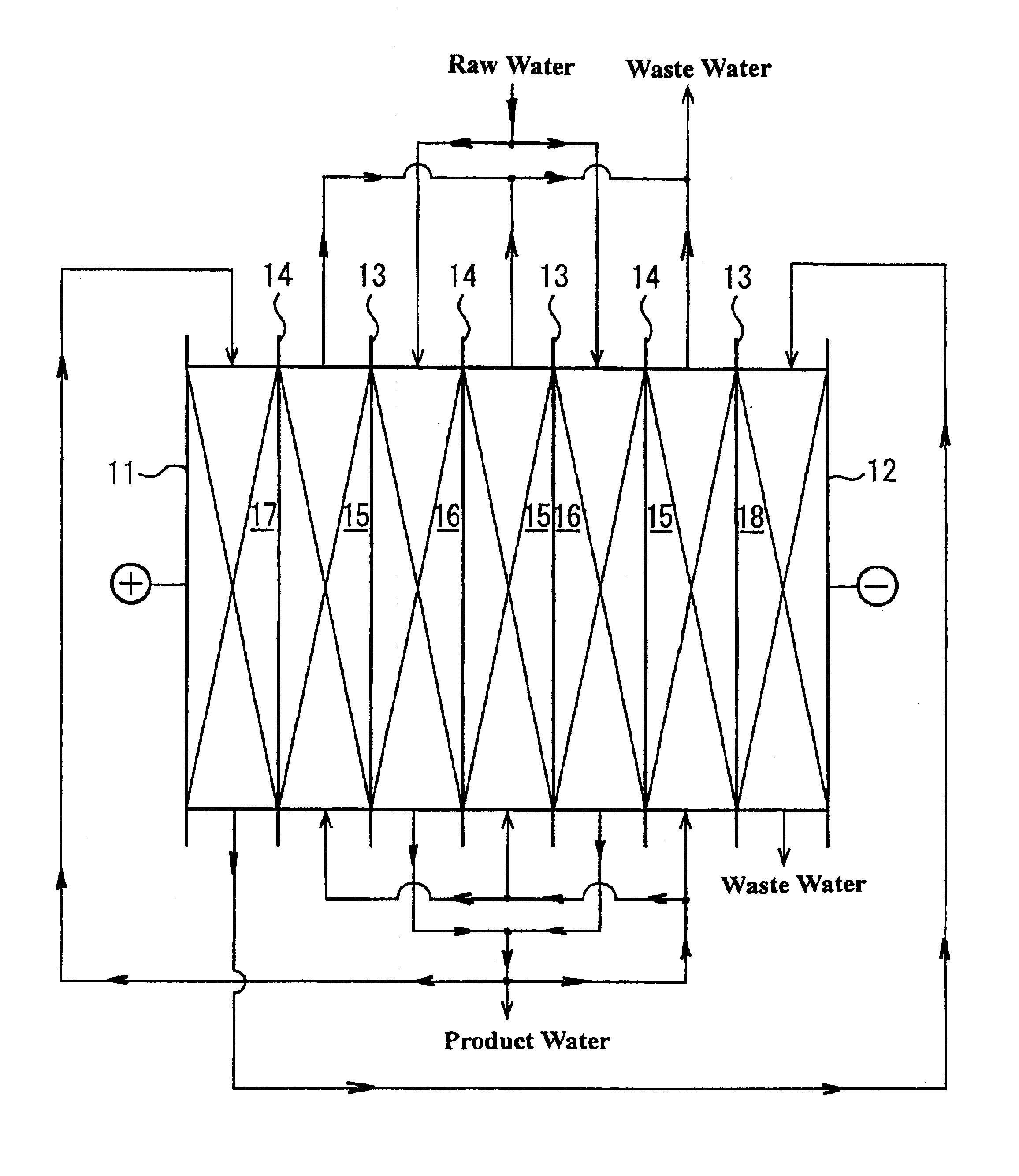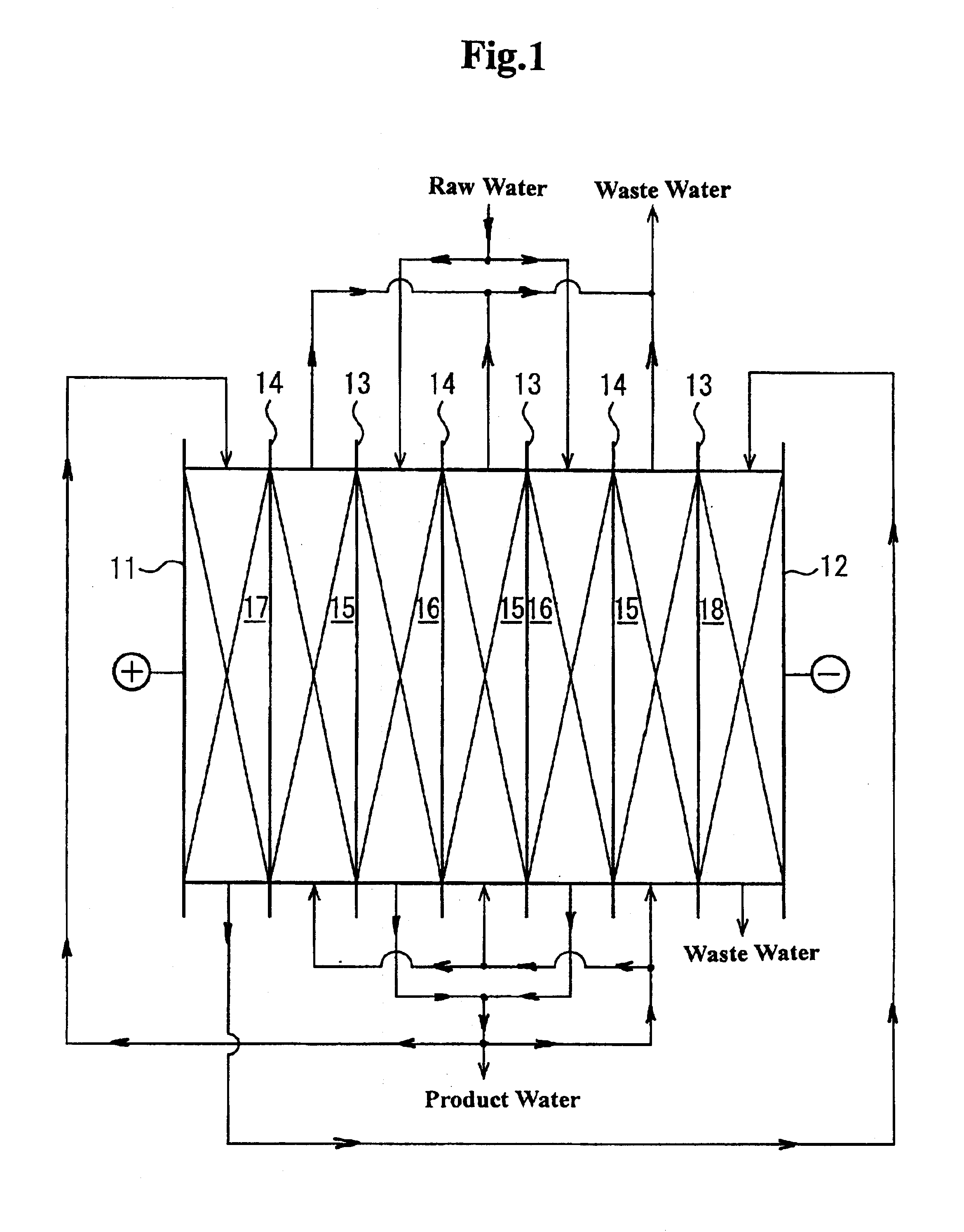Method and apparatus for electrodeionization of water
a technology of electrodes and water, applied in the direction of water/sewage treatment by ion exchange, non-contaminated water treatment, refrigeration components, etc., can solve the problems of removal of silica and boron, and achieve the effect of preventing the production of chlorine in the electrode compartmen
- Summary
- Abstract
- Description
- Claims
- Application Information
AI Technical Summary
Benefits of technology
Problems solved by technology
Method used
Image
Examples
example 2
Deionization was conducted under the same conditions as Example 1 except that the raw water was prepared by adding sodium silicate into ultra pure water to have sodium silicate concentration of 300 ppb (SiO.sub.2 conversion).
The raw water contains low ion concentration, so that it is difficult to ensure required current. However, the product water had high-purity such that silica concentration was 0.1 ppb or less (under the detection limit).
Applied voltage for the above experiment was also 9.7 volts in total, that is, desalting compartment: 1.28V.times.2, concentrating compartment: 1.28V.times.3, anolyte compartment: 1.4V, and catholyte compartment: 1.9V.
PUM
| Property | Measurement | Unit |
|---|---|---|
| velocity | aaaaa | aaaaa |
| thickness | aaaaa | aaaaa |
| current efficiency | aaaaa | aaaaa |
Abstract
Description
Claims
Application Information
 Login to View More
Login to View More - R&D
- Intellectual Property
- Life Sciences
- Materials
- Tech Scout
- Unparalleled Data Quality
- Higher Quality Content
- 60% Fewer Hallucinations
Browse by: Latest US Patents, China's latest patents, Technical Efficacy Thesaurus, Application Domain, Technology Topic, Popular Technical Reports.
© 2025 PatSnap. All rights reserved.Legal|Privacy policy|Modern Slavery Act Transparency Statement|Sitemap|About US| Contact US: help@patsnap.com



